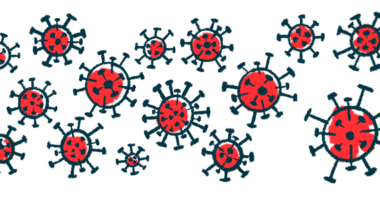CoronaVac Leads to Rare Severe Case of NMOSD in Elderly Woman
COVID-19 vaccination 'may provoke an NMOSD relapse even in the elderly'

The CoronaVac vaccine, which contains inactivated SARS-CoV-2, the virus that causes COVID-19, led to a severe case of late-onset neuromyelitis optica spectrum disorder (NMOSD) in a 70-year-old woman.
The unique case was described in an article, “Fulminant neuromyelitis optica spectrum disorder (NMOSD) following COVID-19 vaccination: A need for reconsideration?,” published in the journal Multiple Sclerosis and Related Disorders.
NMOSD is an autoimmune disease in which the immune system mistakenly attacks the spinal cord and the optic nerves, and the brain in rare instances.
A major driver of the disease is the generation of self-reactive antibodies targeting water channel protein aquaporin-4 (AQP4). This protein is found on the surface of cells called astrocytes, known to play a critical role in supporting the nerve cells (neurons) that send electrical signals.
Although the exact cause of autoimmunity in NMOSD is unclear, it is thought to be a combination of environmental as well as genetic factors because about half of patients have family members with a history of an autoimmune disorder.
SARS-CoV-2 is the virus that causes COVID-19 disease. Several vaccines have been developed to stimulate an immune response against the virus to reduce infection and/or COVID-19 disease severity.
What is CoronaVac?
CoronaVac, developed by Sinovac Biotech in China, is a COVID-19 vaccine that contains the whole inactivated SARS-CoV-2 virus and has been used in various countries in Asia, South and Central America, and Eastern Europe. While CoronaVac has generally been deemed safe and well-tolerated, rare but serious adverse events can occur.
In this report, researchers based at the Isfahan University of Medical Sciences in Iran describe the case of a 70-year-old woman who developed NMOSD soon after receiving CoronaVac.
She was admitted to the clinic with a history of numbness and weakness in her left limbs seven days after receiving the third dose of CoronaVac. Weakness on one side rapidly progressed to an inability to move the lower parts of her body (paraplegia). Muscle weakness then moved to her upper limbs over the next three days.
MRI scans revealed extensive hemorrhagic (bleeding) lesions in the neck portion of her spinal cord. Brain MRI showed no injury.
Analysis of her cerebrospinal fluid, the liquid around the spinal cord and brain, was normal. Testing showed she was positive for anti-AQP4 antibodies, which confirmed NMOSD.
She was started on the anti-inflammatory steroid therapy methylprednisolone for five days, but showed no response. Therapeutic plasma exchange (TPE) was then administered to reduce the levels of anti-AQP4 antibodies. Again, she did not respond and developed breathing difficulties and lost movement in all four limbs (quadriplegia). She was placed on immunosuppressant medication.
The patient did not respond to treatment, developed a fever and a drop in white blood cell levels, and died two months after hospitalization.
“Considering the very late-onset of NMOSD in our patient following 7 days postvaccination, it is plausible that AQP4-[antibodies] was triggered by vaccination,” the researchers wrote.
“However, a previously asymptomatic seropositivity for AQP-4-[antibodies] could not be excluded,” they added. “Under such assumption, vaccination may provoke an NMOSD relapse even in the elderly.”
In a commentary, “Fatal Neuromyelitis Optica after COVID-19 vaccination,” published in the same journal, researchers at the University of Campinas in Brazil noted that several case reports during the pandemic suggest that “immune responses against SARS-CoV-2 natural infection/immunization may trigger [brain and spinal cord]-damage in some individuals.”
The commenters added that repetitive vaccination with inactivated SARS-CoV-2 virus can evoke a robust immune response to the virus, but may also trigger immune dysfunction and lead to the disruption of the blood-brain barrier — a highly selective membrane between the bloodstream and the brain.
“The late-onset of NMOSD following COVID-19 vaccination makes this presentation a unique case that adds strong evidence to the alleged role of vaccination in the development or worsening of NMOSD,” the case report authors said.








